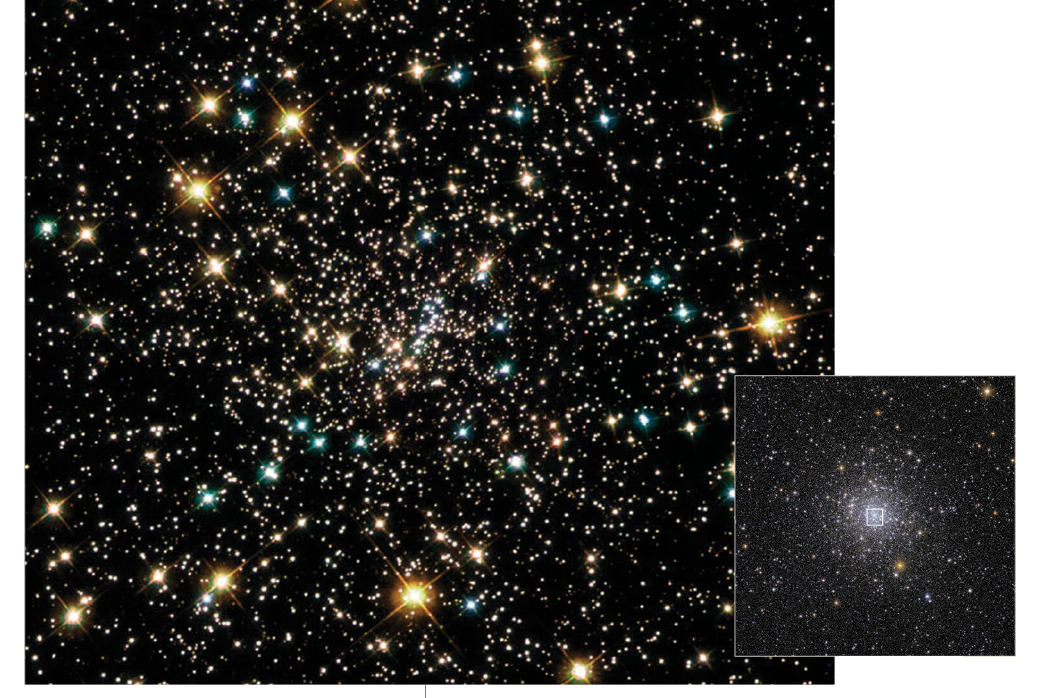
How do globular clusters remain intact for so long? As stars orbit the common center of mass, shouldn’t they cross orbits and collide regularly, destroying the cluster in relatively short order?
Terrence Schell
Kelowna, British Columbia, Canada
Globular clusters are ancient, spherical groups of stars that are often as old as the galaxies they orbit. The stars in a globular cluster orbit the center of mass of the cluster, and the angular momentum of the stars as they move in their orbits keeps the cluster from simply collapsing in on itself. This is the same reason the planets of our solar system don’t fall into the Sun.
But what about stars within the cluster colliding? There are a few factors at play here. First, remember that the stars are always moving — to get a star-star collision, you would have to have two stars whose orbits cross both meet in the same place at the same time. This is like trying to hit one moving target with a second moving target. It’s not impossible, but it is unlikely.
And second, although stars in a cluster are closer together than out in the field (i.e., not in a cluster), the average distance between two stars in a globular cluster is still about 1 light-year. That’s quite far apart! So, most orbits aren’t likely to cross.
Of course, there are exceptions: Stars are only an average of 1 light-year apart, so some are much closer, down to a few light-hours apart — the size of our solar system — or less. So, despite all the reasons I’ve just given for why collisions are not the overall norm, stars can and do collide, particularly in the centers of the most densely populated globular clusters. Astronomers think such collisions might be how certain stars called blue stragglers are created. These stars are particularly massive and bright, meaning they should not live long, yet they are found in these ancient clusters. One way such a star could be produced is if two smaller, older stars collide, creating one massive star that suddenly has a lot of new fuel to burn and looks artificially young.
Even though most stars in a globular cluster are unlikely to collide, stars do often interact with each other gravitationally. If two stars pass close enough to each other, they might exchange energy, giving one a boost so it moves faster and perhaps even orbits a little farther out than before, while the other loses energy and orbits a little slower and closer to the center. In this way, globular clusters change dynamically over time, with heavier stars sinking toward the center and lighter stars moving to the outskirts or perhaps getting kicked out of the cluster altogether.
Alison Klesman
Senior Editor









